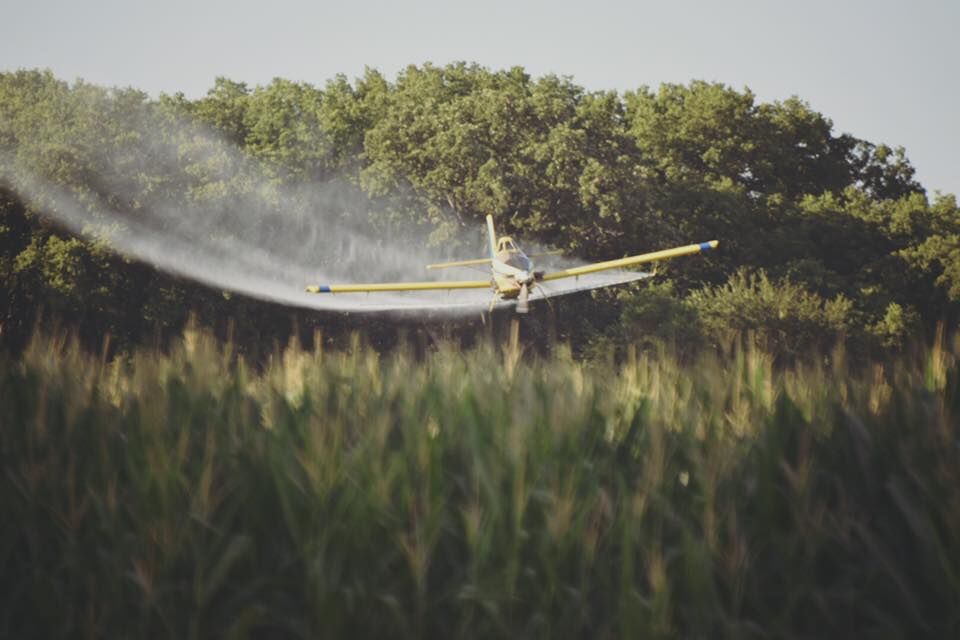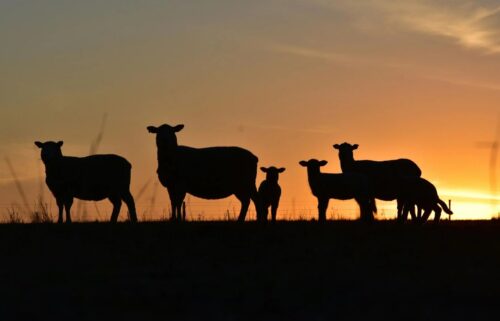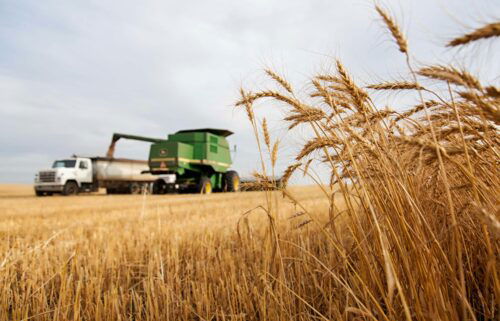McElwain Sprayers

By Ernest White Submitted to Corner Post
It’s an industry that “took off” (literally and figuratively) in the 1920s. The planes, and the pilots who flew them, were called ‘crop dusters’ because the powdered insecticides they applied to agricultural fields gave the appearance of dust settling on the crops. The more appropriate name today is aerial applicators. What is applied now is often liquid in form, and sometimes seeds or seedlings are spread. But it’s hard to overcome the traditional moniker, and people still often point to swooping planes and excitedly cry out, “Cropduster!”
Economics was the primary motivator in the development of the new technology — acres of crops could be treated in minutes, rather than days. And hard-to-reach areas, marshy areas and woodlands could now be treated, as well. While the solution proved effective immediately, economics was also an obstacle to widespread adoption of the practice. Few people could afford a plane — or had the experience and daring to operate it. By the 1950s, surplus World War II planes were readily available, and apprehension about crop dusting was not so daunting. Today, there are about 2800 ag pilots in the U.S.
Old planes were adapted (often by individual users) and put into service, frequently flown by pilots who were military veterans. But the allure of flight appealed to a new generation who were now accustomed to seeing planes soaring and swooping. Results were mostly positive, but accident rates were a concern to many. Joint efforts by the Civil Aeronautics Administration, Texas A&M College and others led to development of aircraft models that greatly improved safety, effectiveness and efficiency of the industry.
One of several aerial application services in the region, Mc Elwain Sprayers, also happens to be celebrating its 50th year in business, so we stopped in for a visit at Rosecrans Memorial Airport in St. Joseph. As is often the case, the path to this point wasn’t a straight one, but it was an interesting one. Floyd McElwain was a military veteran and an over-the-road truck driver in the early 1970’s. A fellow driver who was a pilot often talked about flying and planes and eventually offered to take Floyd up for a spin. Floyd couldn’t stop thinking about flying.
Before long he had his basic pilot’s license. Soon after, taking advantage of G.I. bill funding, he earned his commercial pilot license and was credentialed by a “spraying school” in Texas. By the spring of 1974, McElwain Sprayers was born, based initially at an airstrip in Faucett MO, then in Atchison KS. “Back then there wasn’t near the work there is now. We had 19 jobs that year.” (By contrast, as we talked on the tarmac last week, three McElwain planes took off, returned, re-loaded and left again for jobs near Leavenworth, Wamego, Lawrence and Falls City.)
In 1986, McElwain moved the main base of operations to St. Joseph. But with a service area that encompasses Cameron, Missouri, Emporia, Kansas, Falls City NE and points beyond Wamego and Hiawatha, Kansas, they frequently fly out of Leavenworth, Atchison, Hiawatha and Burlington, too. Floyd’s son, Russell is a partner in the business now, and he’s one of three pilots currently on staff.
I asked Floyd if he remembered the first job he was contracted to do as McElwain Sprayers, and if any harrowing experiences stood out in his career as the jockey of a flying ag sprayer. He chuckled and said with a twinkle in his eyes, they were one and the same! It was a hundred-acre field near Hiawatha Kansas. The wind direction, layout of the property and a tree line at one edge of the field factored into the story. Quick thinking, a bit of daring and a measure of luck did, too. An acrobatic maneuver was involved and damage to the plane was not too great. “I was so focused on a few aspects that I missed other clues. It impressed upon me important lessons I will never forget, and that I often share.”
These days, we commonly see spray buggies on rural roads and in fields at certain times of the growing seasons. Helicopters and drones have claimed a piece of the pie when it comes to aerial service. But still, there’s a place in the skies above croplands and in our imaginations, where ‘crop dusters’ are king.



